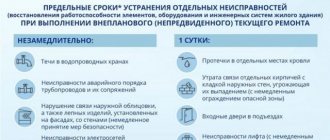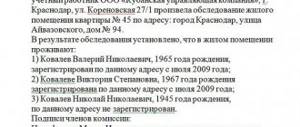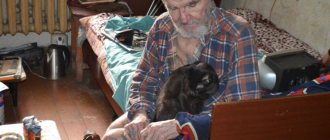Sanitary standards that apply to all types of residential buildings were registered and came into force in 2010. Previously, it was necessary to rely on separate sanitary rules and reporting standards (SanPiN), which were not effective in cases where it was necessary to inspect residential premises in the complex. Now you can be guided by a single approved document, the text of which contains detailed conditions and requirements for the safe and comfortable living of citizens in apartment buildings.
Nowadays, it is customary to refer to and be guided by the new SanPiN during construction, design and architectural work, as well as repairs of residential buildings. A single document regarding SanPiN regulates such issues as:
- Conditions for ensuring the residence of persons in completed and planned residential premises of apartment buildings;
- Standards that must be observed when settling citizens in these premises, taken into account when designing the building;
- Requirements for the process of reconstruction of houses;
- Rules and regulations that must be followed before construction begins;
- Requirements for the operating company.
It should be noted that the mentioned sanitary rules and reporting standards (SanPiN) do not apply to real estate such as hostels, hotels, as well as houses with special purposes (orphanages, rotational camps, homes for the disabled).
Regarding the local area
For all types of residential buildings, an adjacent area must be allocated, the area of which has been agreed upon with the territorial state institution for mandatory planning of the settlement. For such areas, which are an integral part of residential buildings, the requirements and sanitary and hygienic conditions according to SanPiN are also established:
Dear readers!
Our articles talk about typical ways to resolve legal issues, but each case is unique. If you want to find out how to solve your specific problem, please contact the online consultant form on the right →
It's fast and free!
Or call us by phone (24/7):
If you want to find out how to solve your particular problem, call us by phone. It's fast and free!
+7 Moscow,
Moscow region
+7 Saint Petersburg,
Leningrad region
+7 Regions
(free call for all regions of Russia)
- The territory should not be located outside of communal-industrial and sanitary areas with industrial enterprises, as well as outside construction sites of the first sanitation belt, protected structures and water pipelines supplying citizens with clean drinking water;
- The requirements prohibit the containment of potentially dangerous and harmful substances of chemical and biological origin on the adjacent property;
- A preliminary analysis of the soil must show the absence of elements and microorganisms harmful to humans, and the air must be within the limits established by law and with an acceptable level of radiation in terms of ionization;
- The territory must certainly be free of any physical parameters that affect any person, such as increased noise levels, urban or industrial vibrations, infrared radiation or unsafe electromagnetic fields.
In addition, any local area must provide for the possibility of locating a landscaping area, a playground and sports ground, a civil recreation area, parking spaces, as well as utility areas.
Tree planting
Landscaping is of great importance for every yard, since it will not only have a positive effect on its appearance, but also the environmental situation of a particular place as a whole.
However, it must be carried out in such a way that the planted trees and shrubs do not interfere with the residents of the house, therefore the following requirements are imposed on this process:
- All trees whose crown diameter does not exceed 5 meters must be located at a distance of at least 5 meters from the walls of the building.
- All trees with a crown diameter equal to or greater than 5 meters must be planted at a distance of more than 5 meters from the walls of the building.
- All small shrubs can be planted at a distance of 1.5 meters from the walls of the building.
- The height of all shrubs planted at a similar distance cannot exceed the lower part of the window opening located on the first floor of a residential building. Otherwise, exactly the same rules and requirements will apply to them as to trees.
Hygienic aspects
SanPiN prohibits the placement of residential premises in the basement and on the existing ground floor of a multi-storey building. Conditions and rules allow the location of public premises there, which are necessary for the functioning of engineering and technical equipment, as well as communication systems. The requirements for such premises determine the standards for exposure to noise, infrasound conductivity and electrical penetrating magnetic fields.
Car parking is permitted in basements and on ground floors, provided that all types of coverage are sealed. At the same time, when equipped, special channels must be created for the removal of vehicle exhaust gases.
For any types of residential buildings in which public premises for civil purposes are located, a separate entrance from the street is required. Parking lots intended not for residents living in the building, but for any employees cannot be located on the adjacent land plot. In addition, it is prohibited to equip commercial workshops and industrial production in the basement and on the ground floor. If parking for residential buildings is located on the ground floor, it must be separated from residential apartments by an additional non-residential floor. It is not possible to equip medical centers or organizations for children on it.
SNiP for the construction of private houses
A number of requirements are imposed on a residential building, in particular:
- fire safety requirements;
- norms of soil hydrological characteristics;
- rules for the construction of load-bearing walls;
- material consumption standards;
- requirements for location relative to roads and neighboring areas and other structures;
- standards for planning the interior of a residential building.
SNiP of an individual residential building with a complete list of requirements for the construction of a residential building can be found here SNiP SP 30-102-99.
The main requirement is for the layout of interior spaces.
So, for a building to be considered suitable for habitation, it is necessary:
- there should be no industrial premises in the building itself;
- the building must have facilities for housing, food and hygiene procedures;
- there must be a central heating system, and in its absence, heat generators;
- bathroom and storage room.
Moreover, the presence of a bathroom and storage room inside the building is not necessary if there are external buildings on the site that can be used for these purposes.
Restrictions on living space
Sanitary and hygienic rules, conditions and also requirements adopted at the state level establish a number of restrictions for residential premises. These include a ban on:
- Location of sanitary facilities (toilet and bathroom) above residential buildings and kitchens, with the exception of two-level apartment projects;
- Fastening sanitary installations to internal interior partitions and attaching pipelines to interroom walls;
- The entrance to the toilet is opposite the living and kitchen premises, with the exception of the entrance from the bedroom if there is another sanitary unit in the apartment, which can be entered from a common corridor.
For residential apartment buildings that have more than five floors, SanPiN has established requirements to be sure to equip them with a passenger, and in some cases, a freight elevator, also designed for the transportation of citizens with disabilities.
It is prohibited to equip special-purpose premises with lifting elevator mechanisms above living rooms. The design of garbage chutes and electrical cabinets in apartments is also prohibited by sanitary and hygienic standards (SanPiN).
Management company rules
Management companies enter into service agreements with residents and premises owners. The terms of such agreements may contain additional rules for living in the house.
The rules of residence in apartment buildings established by management organizations and homeowners associations should not contradict the norms of housing legislation, as well as other federal and local regulations.
The compliance of management organizations with the requirements of the law is monitored by the local department of housing supervision, as well as members of the control commission of the home HOA.
Read more: Return of goods with mechanical damage law
As a rule, management companies require residents to:
- compliance with the rules for using parking lots managed by the management company;
- compliance with requirements for the use of common areas;
- compliance with deadlines for payment of fees and utilities;
- payment for major and current repairs of an apartment building.
If the management company was involved in the management of the house under an agreement with the local HOA, then the members of the HOA can demand that the management company include the requirements of the majority of residents in the list of rules for using the house . For example, the charter of a number of management companies introduced a rule to maintain silence at certain periods of time - from 12.00 to 13.00, due to the need to ensure peace for families with small children.
If guarded parking is organized on the territory adjacent to the apartment building at the expense of residents, then the management company has the right to determine the rules for using such parking and paying monthly security fees.
Heating systems
SanPiN sets the conditions and requirements for comfortable and safe living of citizens in residential buildings. For example, equipped systems of central and other heating and integral ventilation are responsible for comfort and the created microclimate.
Requirements, conditions and legal sanitary and hygienic standards for heating systems:
- Continuous operation throughout the entire heating period;
- The heating system should not create extraneous unpleasant odors in apartments;
- Air pollution with fumes and substances released when heating systems that are dangerous to people is not allowed;
- The noise level cannot exceed established standards;
- Free access to systems during routine inspections and repairs;
- The temperature of the rooms in relation to contact with the walls should be within three degrees, the temperature between the room and the floor - two degrees;
- Heating equipment must be freely accessible for cleaning and full maintenance;
- The heating temperature when using a water resource cannot exceed ninety degrees, and the temperature of equipment with a heating surface cannot exceed seventy-five degrees, with the mandatory installation of protective grilles.
Sanitary rules for catering organizations
Public catering organizations are required to comply with the Sanitary Rules “Sanitary and epidemiological requirements for public catering organizations, the production and circulation of food products and food raw materials in them. SanPiN 2.3.6.1079-01 “Fixed assets”, approved by the Chief State Sanitary Doctor of the Russian Federation on November 6, 2001.
These Rules apply to existing, under construction and reconstructed public catering organizations, regardless of their form of ownership and departmental affiliation, including the preparation of food and drinks, their storage and sale to the public.
The rules define the requirements:
- to the placement of public catering organizations;
- water supply and sewerage;
- working conditions in production premises;
- arrangement and maintenance of premises;
- equipment, inventory, utensils and containers;
- transportation, reception and storage of raw materials and food products;
- processing of raw materials and production of products;
- distribution of dishes and distribution of semi-finished products and culinary products.
Sanitary requirements have been established for the production of confectionery products with cream, for the production of soft ice cream, for the personal hygiene of organization personnel, and requirements for temporary fast-food catering organizations.
Ventilation systems
Speaking about the ventilation system, sanitary and hygienic standards for comfortable and safe living of the population include the following conditions and requirements:
- A ban on combining the ventilation system for two apartments into one;
- Prohibition on combining exhaust ducts from a sanitary unit and a kitchen;
- When building any additional premises, it is imperative to install an individual ventilation system for it;
- It is allowed to connect exhaust ventilation systems to the residential building system for common areas, provided that such equipment does not create harmful emissions into the air;
- The ventilation shaft must protrude above all ridges of houses by at least one meter.
Sanitary and hygienic requirements and standards provide for the concentration of chemicals in the air of residential buildings during the period when they are put into operation. These standards are checked by relevant specialists, entering the obtained data into the act. Without this document, permission to put the building into operation is not issued until the mark drops to an acceptable value.
Sample complaint
The complaint is drawn up in accordance with the rules of law.
When registering, you must include in the document:
- full name and address of the department;
- personal data (full name, telephone number, postal address, email address) of the applicant;
- the main essence of the text (by whom, when and where the violations of sanitary standards were committed);
- references to regulations, the requirements of which were violated;
- demands to eliminate violations and punish those responsible;
- list of attached documents;
- signature of the originator;
- date of compilation.
Attention! Two copies of the complaint are required. One is transferred to Rospotrebnadzor, and the second, with the date of receipt and signature, remains with the applicant.
About lighting
For residential premises, SanPiN stipulates that houses must be equipped with window openings through which natural light will penetrate. It is indicated by a special coefficient, the value of which cannot be less than 0.5%. In addition, both individual and common areas in a residential building must be equipped with artificial lighting systems.
Sanitary and hygienic conditions and requirements for lighting of residential buildings and adjacent areas oblige these buildings to be planned in such a way that sufficient sunlight can easily penetrate inside. All standards regarding continuous solar radiation are determined by the types of apartments, days of the calendar, the purpose of each room and the location of the building, as well as the climatic characteristics of the locality. Dwelling on this in more detail, it can be noted that:
- For the northern climate zone, the penetration of sunlight from the end of April to the end of August should be at least 2.5 hours per day;
- For the central climate zone, the penetration of solar radiation in the period from the end of March to the end of September should be at least two hours a day;
- For the southern climate zone, the penetration of sunlight between the end of February and the end of October should be at least 1.5 hours per day.
Is it possible to build an apartment building or townhouse on an individual housing construction plot?
In order to build an apartment building on an individual housing construction plot, it is necessary to change the type of plot to “public settlement land”. However, without changing the type of permitted use, it is possible to build a townhouse.
In general, on a privately owned plot of land for individual housing construction, any structures can be erected that do not contradict the law. A townhouse in this sense is a completely legal building. However, the problem arises in connection with the ownership of individual apartments within a townhouse.
The maximum that each tenant can receive is a share of the townhouse. Of course, in court it is possible to determine clear boundaries of the share, indicate the premises that are assigned to the share of a particular tenant, etc. However, in general, the implementation of such a construction is considered undesirable, since there is a high risk of demolition at the request of third parties or the prosecutor's office. Disputes with neighbors will also become a constant occurrence.
Noise, vibration and ultrasound levels
For comfortable and safe living of the population, rules for permissible levels of noise, vibration and ultrasonic waves have been established in all residential apartment buildings. The current rules in their annexes indicate the permissible value of each sound pressure individually, as well as types of noise and the maximum values permissible by law. Thus, in existing premises, noise can be created by installed ventilation systems and other technological devices. For them, it is recommended to reduce the maximum noise level by 5 decibels.
For houses that are located near highways with apartment windows facing them, it is recommended to install special double-glazed windows that prevent the penetration of noise from the outside.
In general, the noise level parameter is determined taking into account the source of its origin, that is, the operation of engineering equipment and household appliances (refrigerator, commercial equipment, equipment for sound reproduction, etc.).
Rules and nuances:
- For residential premises during the daytime, noise may exceed the established standards by 5 decibels;
- Ultrasound that penetrates into a room is also regulated by general rules and is divided into industrial, medical and household;
- Electromagnetic radiation is taken into account not only in the apartment, but also on the loggia or balcony.
Violation of sanitary standards and rules when living in an apartment
- for residential premises, permissible vibration is presented in Appendix No. 4 contained in the sanitary standards. During the day, exposure to vibration can increase by five decibels from the norm;
- ultrasound entering residential buildings is controlled by the above application, and just like vibration exposure, can be increased to 5 decibels;
- indicators of electromagnetic radiation, norms of their intensity in the residential sector, are regulated by Appendix No. 6.
- The next step is to contact government organizations authorized to resolve issues that have arisen (the sanitary and epidemiological service of Rospotrebnadzor, the State Housing Inspectorate, the Department of Municipal Services, the police, the prosecutor’s office, etc.).
- Go to court to protect your rights and interests. In this case, the statement of claim should be accompanied by documents, the list of which is established by Art. 132 of the Code of Civil Procedure of the Russian Federation, including documents confirming your actions taken before going to court (statements, complaints, responses received, etc.). To support your arguments, you can involve other neighbors as witnesses to a violation of public order.
- Complaints and statements can be drawn up in any form, subject to the basic rules for writing a statement.
About electromagnetic radiation
The sanitary documentation, which was adopted and approved in 2010, provides for the procedure for measuring electromagnetic radiation only when the source of this radiation is working, at maximum emissions and from the place that is closest to this source. Measurements are carried out near a metal fence, since it has the ability to relay electromagnetic radiation. During measuring work, be sure to turn off all household appliances, which are also a source of electromagnetic radiation. The specialist conducts an assessment, referring to the instructions for the existing device.
They carry out measurement work with the windows open in the apartment. The result does not apply to indicators obtained from random operating radio devices and vehicles.
Electric fields with a voltage frequency of 50 Hz, in a house with a wall thickness of 20 cm, and at a height of 50 cm to 1.5 m, cannot exceed 0.5 kV/m. In a residential area, at a calculated industrial frequency of 50 Hz, measurements are taken with household appliances and lighting turned off.
Social SN norm of housing
It has no specific content; rather, it is a kind of calculated value used by the social support service so that the authorities can determine whether the family deserves financial compensation for utility bills or being put on a waiting list for preferential programs (for example,). Like others, the size of the SN is set by local regulations.
Let's look at the example again. In the region, NP is equal to 18 square meters. m per person. Your low-income family consists of 3 people and had the right to 54 sq. m. m. But I got an apartment with a living space of 64 square meters.
If CH is also equal to 18, then you will receive compensation for utility costs only for 54 square meters. m, for the remaining meters you will have to pay in full.
In some regions, for single citizens living in one-room apartments, the concept of “social norm” applies to the entire apartment, regardless of its size.
Interior decoration and sewerage
Hygienic requirements invariably affect the interior decoration of residential buildings, since building materials are also not harmless. The total concentration of harmful chemicals and other substances that are found in any finishing mixture and built-in pieces of furniture cannot exceed the maximum permissible values established by law, especially when the temperature in the building rises and evaporation begins.
The following norms are provided by law:
- The electrostatic field voltage when measuring the finished surface cannot exceed 15 kV/m at a humidity of 30-60%;
- The effective measured activity of all radionuclides of any building mixtures should not exceed 370 Bq/kg when used during construction work and reconstruction of housing stock;
- Temperature is also a very important aspect. The coefficient for calculated thermal activity cannot be more than 10 kkakV.m.hour.deg.
The sewer system of any type of residential multi-storey building is provided for at the planning stage, as well as storm drainage and other auxiliary equipment. If there is no sewerage system, the house cannot be higher than two floors. In this case, the temperature of the sanitary facilities must correspond to the temperature of the heated residential premises.
Sanitary rules for trade organizations
Currently, the Sanitary Rules “Sanitary and epidemiological requirements for trade organizations and the circulation of food raw materials and food products in them” are in force for trade organizations. SP 2.3.6.1066-01 “Fixed assets”, approved by the Chief State Sanitary Doctor of the Russian Federation on September 6, 2001.
This document applies to trade organizations under construction, reconstruction and existing ones, markets, bases, warehouses of food raw materials and food products, regardless of organizational and legal forms and forms of ownership (except for refrigerators and markets selling non-industrial agricultural products), as well as individual entrepreneurs.
The rules define sanitary and epidemiological requirements for:
- placement of trade organizations. (In particular, it has been established that in premises built-in, built-in and attached to residential buildings and buildings for other purposes, it is not allowed to place specialized fish and vegetable stores, as well as stores with an area of more than 1000 sq. m; loading of products should be provided from the ends of residential buildings without windows, from underground tunnels in the presence of special loading rooms);
- water supply and sewerage. ( For example , it has been established that all stationary trade organizations must be equipped with toilets and sinks for washing the hands of staff, and trade organizations with a trading area of more than 1000 square meters must be equipped with toilets for visitors. Toilets for staff and visitors must be separate.);
- ventilation, air conditioning, heating, lighting of premises and working conditions of workers;
- planning, placement and arrangement of premises of trade organizations;
- equipment, supplies and utensils. (It has been established that trade organizations must be equipped with commercial equipment, inventory, utensils, containers, packaging materials made from materials permitted by the bodies and institutions of the state sanitary and epidemiological service in the prescribed manner.);
- reception and storage of food products. (Requirements for the storage of various types of products have been determined, in particular, cape, fish, bread, bulk products. It has been established that for trade organizations built-in, built-in and attached to residential buildings and buildings for other purposes, delivery of products at night (from 23.00 to 7.00 hours) is not carried out.);
- sales of food products. (In particular, it has been established that it is prohibited to sell products without a quality certificate (for Russian-made products), accompanying documents confirming their origin, quality and safety; in violation of the integrity of the packaging and in contaminated containers, without labels (or insert sheets); in the absence of the necessary conditions to comply with temperature and humidity storage conditions; rotten, spoiled, damaged peel integrity of vegetables and fruits; expired dates, etc.);
- maintenance of premises and equipment.
In addition, this document establishes hygienic requirements for small retail chains, for the transportation of food products, etc.
Calculation of fees for individual heating - new in the law
» »
For all apartment owners, it’s finally happened! The Government of the Russian Federation, after the ruling of the Constitutional Court adopted on December 20, 2020, already, attention, on December 28, 2020, approved a new procedure for calculating heating! I don’t remember such a speed of adoption of amendments after the ruling of the Constitutional Court , obviously, the documents were developed a long time ago. About the ruling of the Constitutional Court, in which the court gave instructions to the Government to develop a new calculation of heating fees for owners who have an individual boiler, a week later I accidentally discover that the Government has already . The resolution applies not only to those who who has an individual boiler, but also the owners who installed individual heating meters.
if it is not there, then issuing an invoice for it is illegal. Request a decision from the HOA or management company on the issue of payment for heating the entrance. if it is not there, then issuing an invoice for it is illegal. I don't agree with Oleg. This is ONE. And issuing such an invoice is legal. The amount may just not be calculated correctly.
We recommend reading: Individual entrepreneur’s salary for himself
Battery at the entrance standards
During construction, heating radiators were installed in the common areas of the apartment building. Subsequently, these batteries were cut off.
Currently, the owners have written an application to restore the radiators. Should the management company install new heating radiators if these changes lead to an increase in house expenses, namely, heating consumption will increase many times. By virtue of paragraph.
6 Rules for the maintenance of common property in an apartment building, approved by the Decree of the Government of the Russian Federation of August 13, 2006.
N 491 (hereinafter referred to as Rules N491), the common property includes an intra-house heating system consisting of risers, heating elements, control and shut-off valves, collective (common house) heat energy metering devices, as well as other equipment located on these networks.
Your actions:
If you have information about violations of sanitary rules, you can submit a written statement to the Office of Rospotrebnadzor for the Samara Region.
- Take a photograph of the violation.
- Find out information about violators
- Prepare your application
Responsibility
Authorized body
- Office of Rospotrebnadzor for the Samara region
The legislative framework
- Federal Law of March 30, 1999 No. 52-FZ On the sanitary and epidemiological welfare of the population









